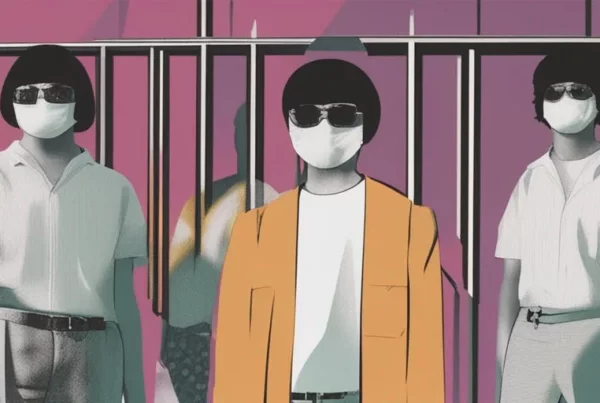
Money and currency are the two components of this equation. Money, in my opinion, is distinct from currency. To comprehend whether money is real or not, we must first grasp the distinction between money and currency.
Let’s start by looking up the definition of money. According to Investopedia, The term currency refers to the tangible form of money that is paper bills and coins. Perfect. So, “It’s a tangible form of money“. It’s nothing but a representation of money.
Let’s start by defining money. Money is any object or means of exchange that people accept for the payment of goods and services, as well as debt repayment. Hmmm. Is that it? I’ve always believed that money is more than simply a means of transaction.
To me, money represents a worldview that comes equipped with a tool belt. An instrument that allows us to quantify value, store wealth, and trade products and services on a vast scale. It is a mechanism that allows transactions to take place. It is the means via which commodities and services are priced, purchased, and sold. To truly grasp money, we must first understand the four main categories of money as described by economists. Commercial money, fiduciary money, fiat money, and commodity money. That might get too difficult for our subject. So let us focus just on how money gives utility.
- It is a medium of exchange, which implies that both parties must accept it for the transaction to take place. For instance, suppose you had a vehicle and I have an apple. You want the fruit, and I want your automobile. We need a mechanism to assess the worth of each object in order to trade with one another.
- Wealth may be measured using money. It is an intrument of measurement. For example, Jack and Jill both have one and two million dollars to their names. Jill is twice as rich as Jack in this scenario. Money is used to assess wealth between people, businesses, organisations, and governments. We will be unable to discern the monetary strength of various entities without this measurement instrument.
- Money as a store of value. Money may be utilised to accumulate riches throughout time. This implies that whether you have money stored in your bank account or beneath your mattress, it will be valuable even years from now (assuming inflation remains low).
Now that we understand the utility of money, we must assume that any alternative medium that delivers the aforementioned benefits may likewise function as money.
But how can anything not be useful in real life?
There is no “actual” money; just what we consider to be real. Your currency bill is only paper, ink, and glue, yet it can purchase you a steak supper or a new automobile. We both feel it is genuine and worth the same amount. That is precisely why it works. It is a social construct, which implies it exists only in our heads. We invented money to help us make sense of the world around us. Society would be unable to operate effectively without it. It does not exist in the absence of us. We make it, utilise it, and then destroy it. Assume that one day we all experience collective amnesia and the 500 rupee currency is erased from our memories. All 500 rupee notes in India are now worthless because we all assume they are.
Can anything be used to represent money?
If currencies can represent money, can anything that represents money can function as a currency? Yes. We see it all the time in the form of gift cards. Assume you purchase a $500 Apple gift card from a 7-Eleven. You pay the merchant $500, and he gives you a $500 gift card. This gift card now represents money in the amount of $500. It’s important to note that it’s $500 only at Apple. It is not redeemable at Samsung. Because Samsung does not recognise your gift card as a substitute for the $500 you spent. It doesn’t think it’s worth $500.
Let me give you another example. My father used to operate a grocery store in my hometown around 35 years ago. It’s a village that’s not even shown on the district map. There was a severe scarcity of 5 rupee notes in the area at the time. As a shopkeeper, my father was responsible for providing change to his customers. He immediately ran out of 5s due to scarcity. That’s when he got an idea. He tore a lengthy piece of paper into ten pieces, scribbled “Rupees 5” on it, and signed it. When they couldn’t locate 5 rupee notes, he would offer them this piece of paper and advise the customer to come back when the scarcity of 5 rupee bills was gone. It was successful. They accepted it since they believed my father to pay them 5 rupees in a month or two when they provided this piece of paper. These separate pieces of paper represented 5 rupees apiece. People who had never been to my dad’s shop started accepting these pieces of paper because they believed they could be exchanged for 5 rupees at my dad’s shop. It circulated throughout the community for a while before people began redeeming it at my father’s business. Did my father make his own money? No, he just made a representation of money.
Can you and I produce our own money if money is merely an idea?
As we all know. Money is a set of beliefs. Currency is a piece of paper with a number printed on it and some ink that makes you and I feel it is worth something because it represents money that you and I believe in.
Take a piece of paper and scribble a number on it. We’ll name it “₢rowns” or “₢₢rowns.” This is only the beginning. We’ve simply made a monetary representation. We have not yet created money. I believe it is a transition. When an economy is built on a representation of money, it may be converted into money.
To produce money, a few people or a group of people who are members of the same organization/government/cult must believe in it. Assume you phone all of your business friends and tell them you’ve invented a new currency called “₢₢rowns.” You inform them that they supply goods and services to anybody who pays in “₢rowns.” Your restaurant buddy may wonder how much ₢rowns he should charge a customer who buys a $500 wine from him.
To persuade your buddy to believe in ₢rowns, you must promise to pay the identical amount in the currency he believes in. So you claim that $1 Equals 1. Your buddies began taking ₢rowns after you offered to pay them cash in exchange for ₢rowns.
The issue arises when your restaurateur buddy uses ₢rowns to purchase goods for his restaurant. Cr wns are not accepted by the provider. So you go to the supplier and ask him to take shares in exchange for the corresponding money amount. You repeat this approach until everyone in the economy begins to accept your guarantee of redemption in dollars as legal money. This is known as “The Network Effect.” As more and more people trust in a concept or a product, its value grows. WhatsApp is the finest illustration of this. It is useful to you since it is used by everyone you know.
As time passes, a belief system emerges. Everyone will begin to believe in their own. If everyone in the economy accepts ₢rowns, there is no need for anybody to redeem them for dollars. Congratulations. You have created new money. When you create money, you will encounter a slew of issues. But that’s a discussion for another day.
Demonetization in 2016.
The Republic of India wished to withdraw 500 and 1000 rupee notes from circulation in order to fight black money in the country. On November 8, 2016, a nationwide announcement was made that the 500 and 1000 rupee notes will no longer be legal currency in the country the following day. No companies or individuals will take those banknotes as legal cash, and customers must exchange them at a bank near them. We Indians recall running out of our houses to make change for the 500 and 1000 rupee notes at our local businesses before word got out.
Let us suppose that there is a self-sufficient city in India. The city and its economy are totally isolated from the rest of the country. As a result, the city’s economy is developed with itself at the centre. Everyone’s needs are met in the city through the city’s resources. Nobody in this city is aware of the demonetization or its consequences for the rest of the country. In this metropolis, everything was as normal. Individuals and businesses continued to accept 500 and 1000 rupee notes as a reflection of the money they believed in. There is no reason for someone to go to the bank and replace it if everyone around them accepts it. In principle, if everyone in India refused to accept the demonetization of banknotes and continued to use them as a means of trade, the government’s attempt to combat black money would have failed. I’m not against demonetization, but this is just so much fun and intriguing to ponder.



